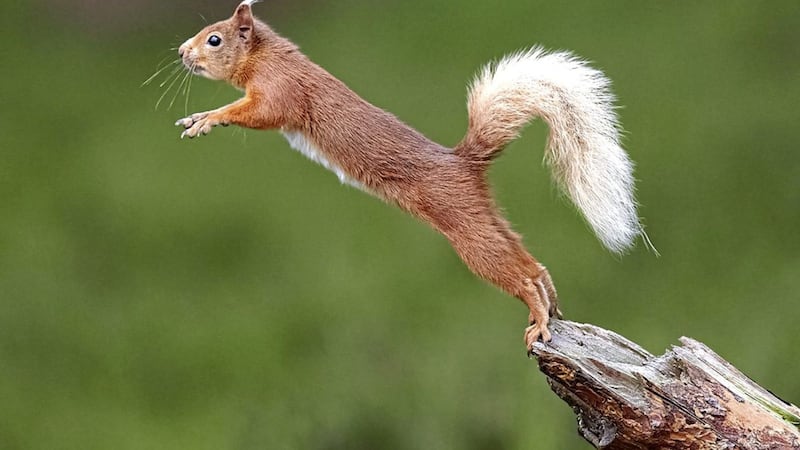THE threat to our indigenous species from human activity can be blunt and brutal. In the past few hundred years we have seen the extinction of wolves and eagles and the near-extinction of corncrakes and many of our birds of prey.
Deforestation, aggressive agricultural practices and, more recently, the use of pesticides have changed the landscape and destroyed the natural habitats for many of our species and are putting the survival of insects, our natural pollinators, at risk.
However, sometimes the destruction is more nuanced and takes place almost by accident, the result of unthinking actions that can have a detrimental impact.When the Normans brought rabbits to Ireland, it was for a source of food – they had no idea of the impact it would have on the native Irish hare.
Birds of prey were hunted by farmers who feared they wouldprey on new-born lambs. I’m not quite sure how North American Grey squirrels came to be introduced into Ireland but they have now become an existential threat to our native Red squirrel.
The Greys are faster breeding, compete for the same foods and carry viruses that do not affect them but which kill the Reds. Groups such as the Antrim-based Glens Red Squirrel Group are working to help re-establish the indigenous species’ population through education, promotion, research and protection activity in support of our Red squirrel populations.
But the group says its preservation and defence activity consists primarily in keeping Grey squirrels away from our Red populations.
“That means we trap and humanely destroy Grey squirrels where they start to encroach into the remaining pocket populations of Reds,” the group says.
However, they recently reported what was described a “worrying trend” among captured Greys. They said they are all adults; some have been found to have a section of tail missing (a common consequence of being trapped); when viewed on wild cameras they are exceptionally wary of traps; and there is no evidence of them moving into the Glens from surrounding woods or using water ways to access the area.
The Glens group says it has been in touch with other rangers in Northern Ireland and Britain and the consensus is that these squirrels are Greys that have been trapped and released into the wood.
A spokesman said: “If this is the case, it may be someone doing it because the Greys are a nuisance to them and they are removing them to stop them causing problems.
“Alternately, it may be someone seeking to trap some other animal – rat, hedgehog, fox or whatever – who have inadvertently caught a Grey and are reluctant to dispatch the animal.
“It may even be someone who actively wants to introduce Grey squirrels to the Glens. It is actually a criminal offence to release into the wild a bird or animal that is of a kind not normally resident in Northern Ireland and that includes Grey squirrels.
“But we would rather educate than prosecute, so if you have released Greys or know of anyone who is releasing Greys into the Glens, please get in touch with us.
“If you have trapped a Grey we would be happy to help you deal with the animal – by dispatch or release in a non-Red area – if you are just a Grey squirrel fan we would love to have the opportunity to set out how you can assist us in our broader conservation and preservation work.
“But principally we would ask that the practice of releasing Greys into the Glens area stop.”








